1 W. Main St. | Newcastle, WY 82701
Weston County Homeland Security
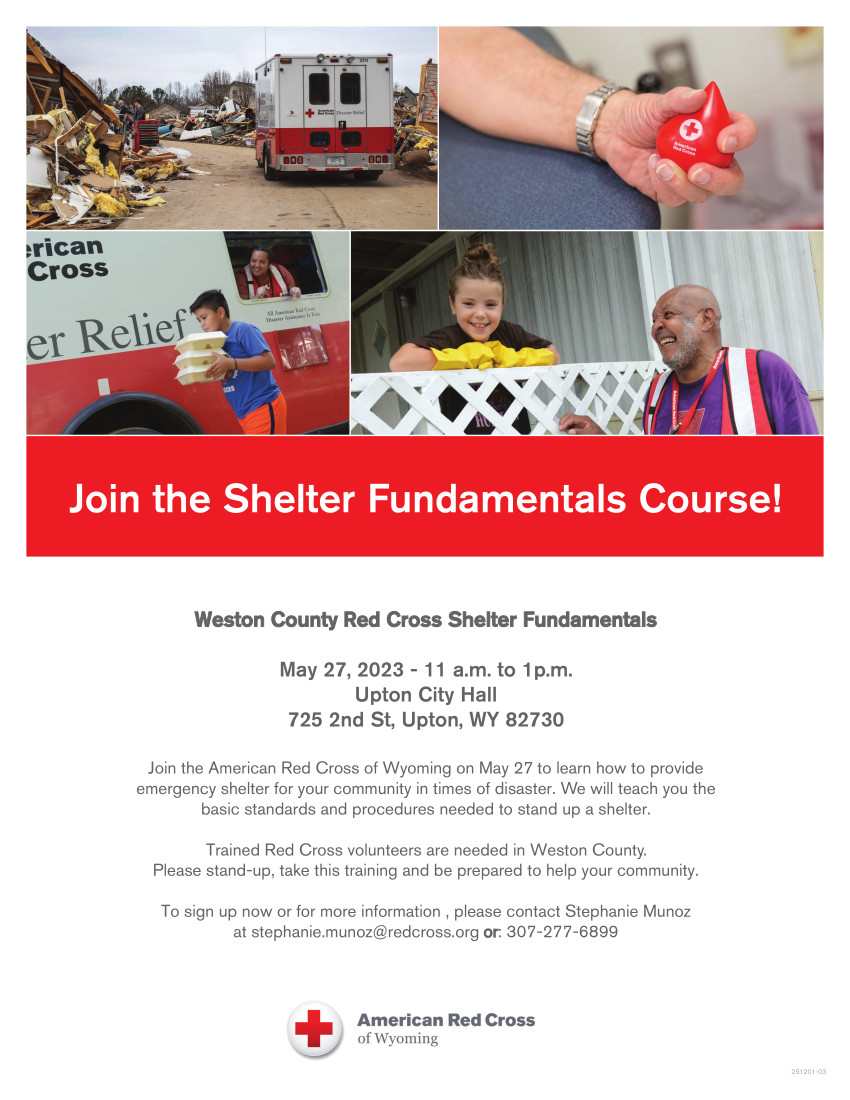
Welcome to the Office of the Weston County Homeland Security
Weston County,
This is your source for emergency preparedness information specifically tailored for the residents of Northeast Wyoming. It is meant to help you, your family, and local businesses and organizations to prepare for emergency situations likely to occur in this area. If you still have questions, feel free to call the numbers listed above. Prepare for the worst, but always hope for the best.
Emergency Management Coordinator
Gilbert Nelson
Office 307-746-4315
Cell 307-746-8020
Email [email protected]
Mission
Weston County Homeland Security Office strives to support our responders, citizens, visitors, businesses and municipalities, and to ensure that we all continuously work together to identify threats, build, sustain, and improve our local capabilities to prepare for, protect against, respond to and recover from any hazards that face our community and that through mitigation efforts we work to decrease the consequences of disasters that occur within or threaten our community.
Emergency Preparedness
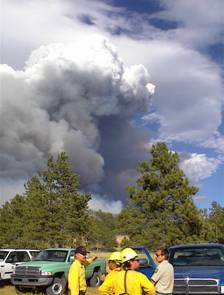 Emergency incidents and disasters strike
Emergency incidents and disasters strike
with little or no warning. If that happens here in Weston County, local emergency
responders will likely be overloaded in trying to gain control of the situation and treating the injured. If you are not
severely injured, you need to be prepared to survive unaided for the first 72 hours.
You have a choice-
Be part of the problem, or…
Be part of the solution.
If you want to be part of the solution, here are some tips to help you:
- Gather Relevant Information- Collect information that will help focus your emergency preparations.
- Create an Emergency Plan- Advance preparation will save time and avoid mistakes in an emergency situation.
- Stock an Emergency Supply Kit- When disaster strikes, you won’t be able to shop for life saving necessities.
- Learn Basic Survival Skills- You are the real first responder!
Emergency Information
Gather relevant information that will help you create an effective plan and assemble an appropriate supply kit. Start the process by calling your local Homeland Security Office.
- Find out which emergency incidents and disasters are most likely to occur in the county and NE Wyoming.
- Learn how you will be warned of an emergency.
- Become familiar with local evacuation routes.
- Learn about emergency plans at your workplace and where your kids attend school, including day care.
- Ask about special assistance for elderly or disabled persons.
Hazards in Weston County
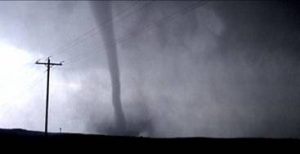 Weston County is vulnerable, by varying degrees, to the effects of a variety of natural and manmade hazards. The most likely natural threats, in order of relative probability, are severe weather events, wildland fire, and drought. Some of these natural threats may also occur in multiples; for example, a severe lightning storm followed by a wildland fire.The most likely manmade threats, in order of relative probability, are power failure, urban fire, hazardous material spill, and a mass casualty-fatality incident. Similar to natural threats, manmade threats may occur in multiples. They may also occur in response to a natural threat occurrence; for example, a severe winter storm may result in a widespread power failure.
Weston County is vulnerable, by varying degrees, to the effects of a variety of natural and manmade hazards. The most likely natural threats, in order of relative probability, are severe weather events, wildland fire, and drought. Some of these natural threats may also occur in multiples; for example, a severe lightning storm followed by a wildland fire.The most likely manmade threats, in order of relative probability, are power failure, urban fire, hazardous material spill, and a mass casualty-fatality incident. Similar to natural threats, manmade threats may occur in multiples. They may also occur in response to a natural threat occurrence; for example, a severe winter storm may result in a widespread power failure.
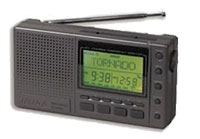 Transmitters
Transmitters
Newcastle: Channel 4 [162.475]
Lead: Channel 6 [162.525]
Gillette:Channel 5 [162.500]
Weather radios are now used to transmit more than just weather alerts. They are all-hazard alert radios. If you want more information on NOAA weather radio go to http://www.nws.noaa.gov/nwr/ the initial warning, all citizens should tune their radios to KASL AM 1240 for further detailed information. This information will be provided directly from the radio station during regular business hours and via the Emergency Alert System (EAS) at all other times.
D. The county dispatch center may also use the CodeRED reverse 911 System to keep citizens informed. This system allows the dispatch center to make mass calls to targeted areas of the county. The system automatically includes all wireline phone numbers in the county. If you also want to include your cell phone number in this emergency notification database click on the CodeRED icon and follow the instructions.

II. Emergency Plan. Discuss what you have learned concerning the possibility of local emergencies and disasters. Then prepare an emergency plan, not necessarily written, but one that everyone knows and understands.
- Meet with household members and discuss how to respond to likely emergency situations, including power outages, personal injuries, and fire.
- Draw a floor-plan of your home; mark two escape routes from each room (if possible).
- Post emergency telephone numbers near telephones; and teach children how and when to call 911, police and fire.
- Pick one out-of-state and one local friend or relative for family members to call if separated by a disaster.
- Pick two meeting places- 1) near home in case of fire and 2) outside the neighborhood in case you cannot return home.
- Keep family records in a water and fire-proof container.
III. Emergency Supplies. Assemble supplies that you or your family might need if you are required to evacuate (on short notice) or shelter-in-place (for a minimum of 72 hours). Make sure that these supplies are stored together and in a manner that makes them portable if you suddenly have to evacuate. Items marked with an asterisk (*) are the minimums for a sudden evacuation.
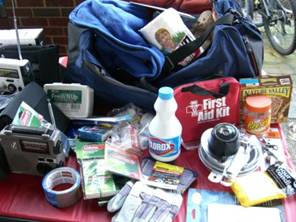
- Supply of Water- 1 gallon per person per day; store water in sealed, unbreakable containers; replace every 3 months.*
- Water Purification Agent- liquid chlorine bleach or purification tablets.
- Supply of Nonperishable Food and a Can Opener (non-electric)- select foods that require little or no preparation and are compact and lightweight.
- Eating Utensils- mess kit or the disposable paper-plastic variety.
- First Aid Kit- include as a minimum sterile bandages, adhesive tape, scissors, tweezers, safety razors, needles, soap, antiseptic towelettes and spray, plus a collection of non-prescription drugs.*
- Prescription Drugs- critical medications extra set of eyeglasses (as appropriate); remember to add these before evacuation.
- Battery-operated Radio- plus extra batteries.*
- Flashlight- plus extra batteries.*
- Change of Clothes- plus rain gear and sturdy, yet comfortable shoes.*
- Blanket and/or Sleeping Bag.*
- Sanitation Materials- include personal hygiene items and toilet paper.*
- Cash- a minimum of $100 in small bills.*
- Car / Truck Keys- an extra set.*
- Personal Information- for each family member include blood type, medical problems and prescriptions.*
- Important Family Documents- include wills, insurance policies, deeds, contracts, social security cards, passports, immunization records, bank and credit account numbers, and birth-marriage-death certificates; store in a portable waterproof container.
- Miscellaneous Items and Tools- include a compass, whistle, signal flare, fire extinguisher, plastic bucket with lid, pliers, wrench (to shut off household gas and water), utility knife, and a small shovel.
- Miscellaneous Supplies- include plastic sheeting and duct tape, matches in a waterproof container, plastic garbage bags, and disinfectant.
- Special Items for Infants, the Elderly, or Disabled- as appropriate.*
Emergency Preparedness Manual.*
Suggestions:
- Store your kit in a convenient place known to all family members.
- Keep items in air-tight plastic containers.
- Change stored water every 3 months so it stays fresh.
- Rotate your stored food every 6 months.
- Rethink your kit and family needs at least once a year. Replace batteries, update clothes.
IV. Emergency Skills. Develop personal skills to help you and your family respond to and survive a disaster.
Instruct family members on the meaning of siren sounds, and how to turn on the radio for further emergency information.
Practice evacuating your residence. Use both primary and alternate routes and gather at the chosen (nearby) meeting point. Insure that all family members, including children, understand how to respond to smoke in case of a fire.
Take a basic first aid and CPR class.
Learn how to turn off water, gas, and electricity at the main service switches/valves.
Teach children how and when to call 911 (police and fire). Also teach them how to make long distance phone call
Hazardous Materials (HAZMAT)
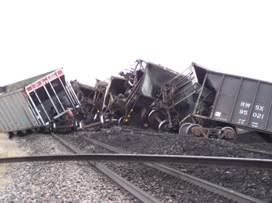 We in Weston County are surrounded by hazardous materials. For better or worse they are part of our daily life, in our homes and at our worksites. The community organization which provides a forum for first responders, industry, and the public to work together to evaluate, understand, and communicate chemical hazards is the Local Emergency Planning Committee (LEPC).
We in Weston County are surrounded by hazardous materials. For better or worse they are part of our daily life, in our homes and at our worksites. The community organization which provides a forum for first responders, industry, and the public to work together to evaluate, understand, and communicate chemical hazards is the Local Emergency Planning Committee (LEPC).
At Risk Form
Tony Barton
Chairman of the Weston County Commission
Past County Elected Officials
Lists of former county elected officials are now available online! These date back to 1915!
